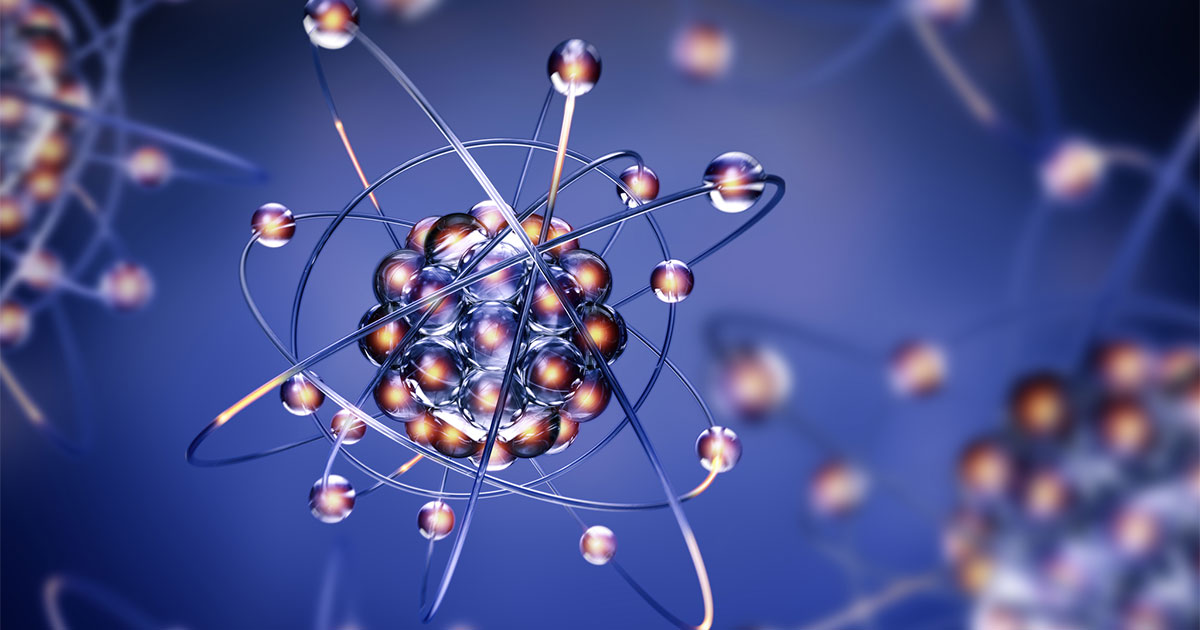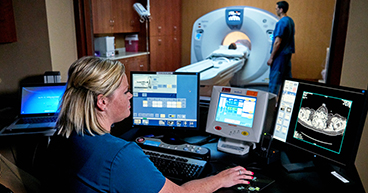
Photons and protons may sound like something out of Flash Gordon or those cheesy old science fiction movies. But for radiation oncologists, they are essential tools to treat cancer.
Photon therapy and proton therapy are the two main types of radiation therapy used to treat cancer. They are different forms of ionizing radiation, and they work by damaging the cancer cells so they can’t reproduce and eventually die.
While photons and protons may sound a bit alike, there’s more to the differences in these therapies than just the second letter in their names.
Photons are bundles of electromagnetic energy. They are a basic unit of nature that makes up all light.
Protons are positively charged subatomic particles found in the nuclei of all atoms.
The key between difference between the two in terms of radiation therapy: Like an x-ray, photon beams will pass through the body and have an exit point, whereas protons can be stopped in tissue without a significant amount exiting the body.
How are they used?
Photon beam therapy is the most common type of radiation therapy. It uses high-energy x-rays to damage the DNA inside cancer cells.
Photon radiation therapy is produced by a machine called a linear accelerator. Photons, like light, do not have physical mass, so they can pass through the body and will not stop inside the tumor.
“With photon radiation, we can minimize, but are not always able to eliminate, the radiation dose that a neighboring organ receives,” says Hani Halabi, MD, Radiation Oncologist at Cancer Treatment Centers of America® (CTCA), Atlanta.
Advanced technology allows radiation oncologists to better match the size and shape of the tumor and to follow a tumor as it moves while a patient is breathing. But radiation may still affect parts of the body other than the area being treated.
“We can modify the beams, change the angles and modify the intensity of the radiation to make the normal organ get less radiation, and keep the radiation exposure to the organ within acceptable and tolerable levels,” Dr. Halabi says. “But it will not be zero.”
Protons have physical mass and can be stopped at a certain depth inside tissue. Without the exit dose, protons improve the sparing of surrounding organs and normal tissues. This offers several potential advantages over photon therapy, including:
- It may result in fewer side effects because less healthy tissue is irritated by the radiation.
- Because of the enhanced ability to spare surrounding organs, proton therapy may allow for higher doses of radiation to be delivered to the cancer compared to photons.
- By decreasing the amount of radiated tissue, proton therapy may help reduce the risks of radiation-induced malignancies later in life for children and young adults requiring radiation.
“With proton therapy, we can stop the radiation at a certain depth in the body,” Dr. Halabi says. “This can significantly improve our ability to spare the neighboring organs from receiving radiation.”
When are these radiation therapy options used?
According to the National Association for Proton Therapy, proton therapy may be a treatment option for some of the most common cancers, including breast, lung, prostate and various types of lymphoma. Yet, there are only 39 regional proton therapy centers in the United States. Proton therapy is not used to treat patients at CTCA®, although doctors may refer patients for proton therapy if needed.
So, if proton radiation offers these perceived advantages, why isn’t its use more widespread? The bottom-line: Proton therapy is very expensive. Its high cost has limited research into its use and raised questions about cost effectiveness. Also, advances in photon therapy delivery have made it more difficult to establish superior outcomes with proton therapy.
In a 2016 paper exploring the future of proton therapy, the authors write: “Despite the high potential of proton therapy, the clinical evidence supporting the broad use of protons is mixed. Although promising results have been and continue to be reported for many types of cancers, they are based on small studies. Considering the high cost or establishing and operating proton therapy centers, questions have been raised about their cost effectiveness.”
Currently, proton therapy is recommended for the treatment of children caners because of its potential to limit damage to organs that may not be fully developed. “Normal tissue sparing is critical in the developing tissues of a child or young adult. In these patients there is a very strong argument for using proton therapy to minimize the late effects radiation can have on growth and normal body function” Dr. Halabi says.
Cancers that are located next to critical structures, such as the spinal cord, eyes, and the brain, may also benefits from treatment with proton therapy.
Dr. Halabi predicts that proton therapy will be in widespread use in the next 10 years as more research is performed and the technology becomes less expensive and more available. So, while proton therapy may not be an option for many, advances in photon therapy continue to deliver positive outcomes for many patients.
If you’re interested in learning about treatment options for your cancer, or if you’d just like to talk with someone at CTCA® about your cancer care, call us or chat online with a member of our team.


